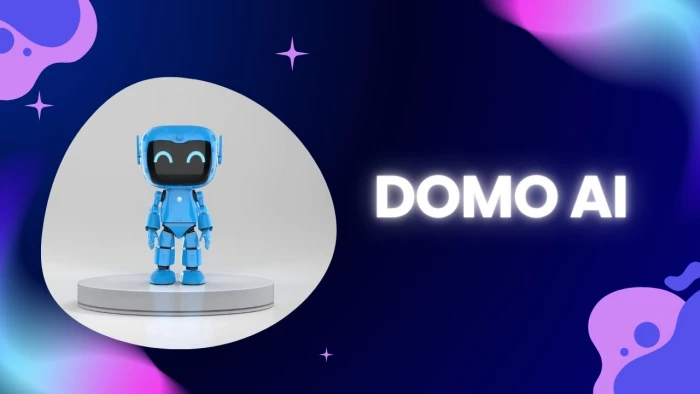

I’ve spent the past week testing and researching DomoAI, the platform that claims to convert text, images, or videos into fully animated clips using AI.
It’s been trending in creator communities as a supposed “shortcut” to professional-looking video generation, especially for anime-style visuals.
But I wanted to know what’s behind the hype.
Is it actually capable of replacing traditional editing tools like Runway or Kaiber, or is it still more of an experimental playground?
Let’s break it down, feature by feature, claim by claim.
According to the official DomoAI website, the platform uses multimodal AI models that can turn prompts, images, or even existing footage into motion sequences.
The team markets it as an “AI visual creativity suite” rather than a single generator.
Under the hood, it runs several specialized tools:
That’s a broad toolkit, but as always with generative AI, the real question is consistency.
It’s one thing to promise “any video from a text prompt,” and another to actually deliver footage that looks intentional, cohesive, and human-guided.
After exploring the workflow, I realized DomoAI is more “pipeline-based” than one-click magic.
You start by choosing your mode (e.g., text-to-video or video-to-video). The platform then generates a short preview and lets you refine style parameters, such as camera motion, color tone, or art style.
The whole process feels closer to RunwayML’s Gen-2 system than to simple render tools like Pika Labs.

Where it differs is flexibility: DomoAI leans heavily on style transfer and anime aesthetics, areas that other platforms often limit or ban.
In fact, its AI Anime Video Generator feels designed to attract the creative fandom crowd rather than corporate editors.
But this creative freedom comes with a trade-off: variable quality.
Visually, the site is sleek. Navigation is straightforward, with a clean dashboard separating Tools, Quick Apps, and Create tabs.
Unlike Runway or Kaiber, you don’t need heavy GPU hardware, everything runs on cloud servers.
Still, compared to RunwayML or Pika Labs, rendering times can feel inconsistent.
Sometimes a 5-second video appears in a minute; other times, it takes several attempts before the render completes.
That variability reflects a common thread across generative video models, quality control.
In this sense, DomoAI behaves more like Kaiber’s experimental stage than a polished production tool.
Based on official and third-party listings like Futurepedia and HitPaw Edimakor’s review, DomoAI follows a freemium model:
| Plan | Price | Notes |
| Free Plan | $0 | Limited credits and watermark |
| Basic | $6.99/month | More generation minutes, watermark removed |
| Standard | $19.59/month | Faster render, 1080p export |
| Pro | $48.99/month | Commercial rights, priority queue |
Unlike Runway’s per-seat pricing or Kaiber’s credit-based model, DomoAI’s tiers focus more on creative freedom and export rights.
However, Trustpilot reviews suggest some frustration with refunds and subscription cancellations.
A few users report delays in customer support or unfulfilled cancellations, which is worth noting before committing to a plan.
User sentiment is split across platforms.
On Facebook’s AI Animation Community, users share impressive anime transformations — especially for static image-to-video conversions.
One creator said,
“I made a 10-second anime clip from a still in under 5 minutes, it’s insane how easy it was.”
Others on Reddit’s Business Intelligence board note that the Domo ecosystem connects with data and visualization tools (via Domo.com/AI), though this appears to refer to a separate enterprise product, not the same as DomoAI.app.
Trustpilot reveals several one-star reviews describing:
“It’s fun to experiment with, but don’t expect pro results on the first try.”
That candid view seems fair — DomoAI feels experimental and creative, not commercial-grade.
It’s a sandbox for imagination, but not yet a studio for broadcast-level reliability.
| Feature | DomoAI | RunwayML | Kaiber | Pika Labs |
| Main Strength | Anime, style transfer, creativity | Film realism, control, editing | Artistic motion from stills | Quick short-form scenes |
| Interface | Simplified web app | Full editor, timeline | Intuitive mobile/web | Lightweight prompt UI |
| Quality Consistency | Variable | High | Medium | Improving |
| Best For | Creative creators, influencers | Video editors, professionals | Artists, musicians | Fast idea visualizers |
So if you’re in the “AI for imagination” camp, DomoAI might actually feel more fun than Runway.
But for production-grade control, RunwayML and Pika Labs still lead the field.
The domain domoai.app appears legitimate, it’s verified by multiple AI directories including Futurepedia and Mattrics.
No security breaches have been reported publicly.
However, there’s confusion with the separate enterprise analytics brand Domo.com.
They share a similar name but are distinct companies, one focused on business data, the other on creative AI.
That distinction matters for trust. While DomoAI.app is safe to visit and use, always double-check billing and data policies before linking payment details or large creative projects.
AI video tools are exploding, from Synthesia for talking avatars to Runway Gen-2 for film sequences.
DomoAI carves a different niche: playful creativity.
It reminds me of early days of Lensa, chaotic, fun, hit-or-miss, but undeniably empowering.
For artists, it’s a tool to explore motion and style.
For brands, it’s a glimpse at what lightweight production might look like next year.
Whether it becomes essential or fades as a novelty depends on how quickly its model quality and reliability improve.
After exploring the tools, user feedback, and competitors, my impression is simple:
DomoAI isn’t a professional replacement for Runway, but it is one of the most creative playgrounds in AI video right now.
It lowers the barrier between imagination and execution.
Sometimes it hits the mark beautifully, other times, not so much.
But that unpredictability is also part of its charm.
If you’re willing to experiment, accept imperfections, and treat AI as a collaborator rather than a replacement, DomoAI can genuinely expand what’s possible in your creative process.
Be the first to post comment!